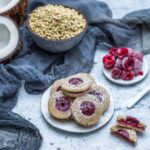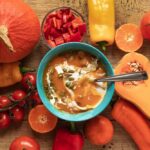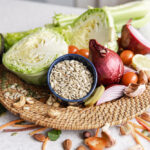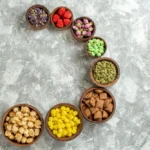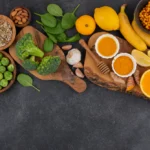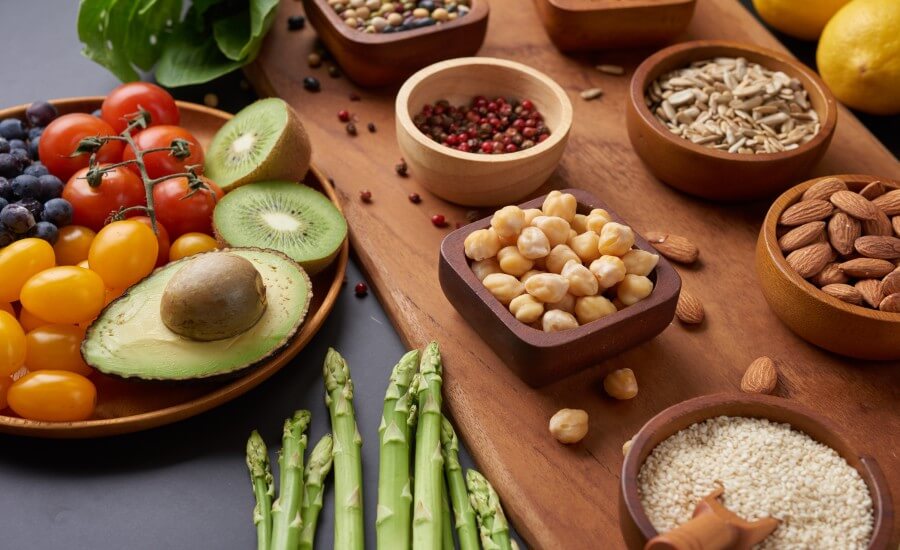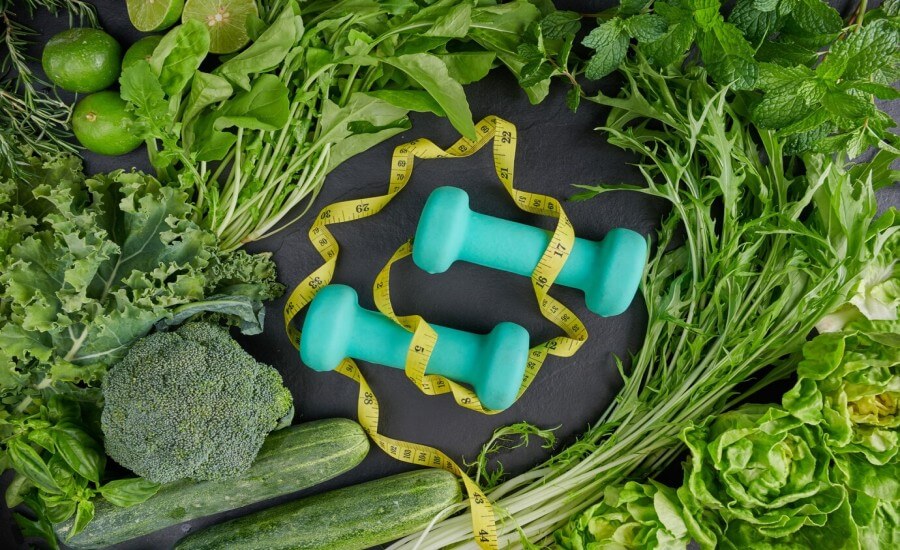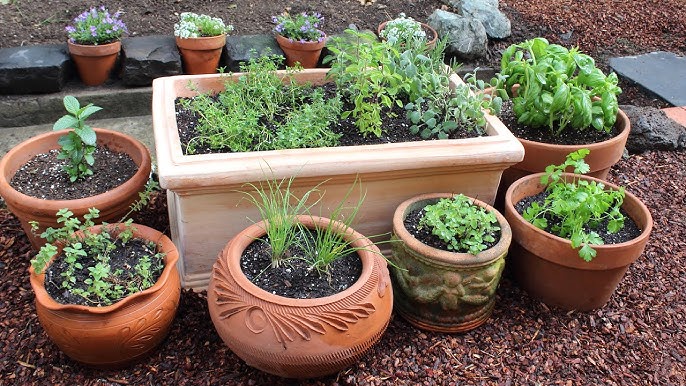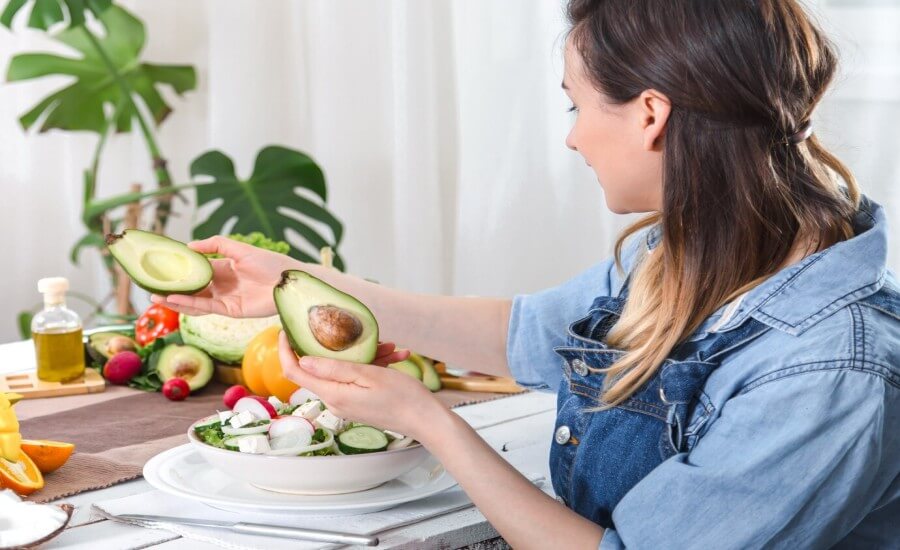The conversation around nutrition is evolving. More than ever, people are seeking food choices that nourish their bodies, respect the planet, and align with their values. At the center of this shift is a powerful, versatile, and often misunderstood nutrient: protein. Specifically, plant-based protein.
As nutrition scientist Dr. Maya Patel famously stated, “Protein is the building block of life, and plants provide abundant, sustainable sources that fuel both body and planet.”
Whether you’re a seasoned vegan, exploring a “flexitarian” approach, an athlete looking to optimize performance, or simply curious about incorporating healthier meals into your week, this guide is for you. We’ll dive deep into why protein from plants matters, reveal the top 10 powerhouse sources, share practical tips to effortlessly boost your intake, and explore the science-backed health benefits that make plant-powered protein one of the smartest choices you can make for your well-being.
Why Plant Protein Matters: More Than Just a Meal
Protein is a macronutrient that is necessary for immune system support, enzyme and hormone synthesis, and tissue growth and repair. While animal products have long been seen as the default source, a growing body of evidence highlights the profound advantages of turning to the plant kingdom. The shift to plant-based protein isn’t just a trend; it’s a conscious choice with far-reaching positive impacts.
| Reason | Impact |
| Lower Carbon Footprint | Plant protein generates up to 90% less greenhouse gases than beef. |
| Reduced Saturated Fat | Most plant proteins are naturally low in saturated fat, supporting heart health. |
| Rich in Fiber & Phytonutrients | Whole-food plant proteins bring antioxidants, vitamins, and minerals. |
| Ethical Alignment | No animal pain, in keeping with the principles of veganism and animal welfare. |
| Cost-Effective | Beans, lentils, and grains often cost a fraction of meat per gram of protein. |
Let’s break these down further:
- For Your Health: Plant-based proteins are uniquely packaged by nature. Unlike their animal counterparts, they come with fiber, which is critical for digestive health and blood sugar regulation. They are also free of dietary cholesterol and typically low in saturated fats, a combination that is strongly linked to improved cardiovascular health. Furthermore, they are brimming with phytonutrients powerful plant compounds like antioxidants that help protect your cells from damage.
- For the Planet: The environmental argument is compelling. Compared to rearing livestock, producing plant protein uses a lot less energy, water, and land. Choosing a lentil stew over a beef burger directly reduces your carbon footprint, helping to combat climate change one delicious meal at a time.
- For Your Wallet: Building a diet around plant-based staples is remarkably economical. A bag of dried lentils or beans can provide the foundation for numerous high-protein plant-based meals at a fraction of the cost of meat or fish, making healthy eating accessible to everyone.
By choosing a vegan protein source, you’re making a holistic investment in your personal wellness and the health of our world.
The 10 Best Plant-based Protein Sources for Vegans
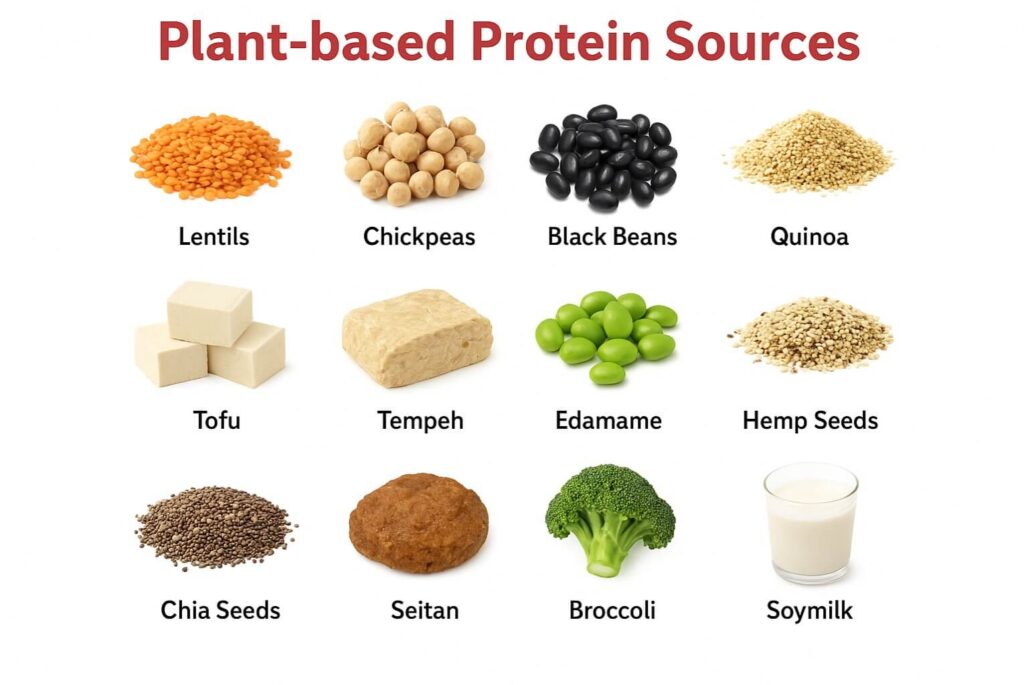
Ready to stock your pantry? These ten high-protein plant-based foods are versatile, delicious, and consistently rank as the best of the best. Each one is a nutritional powerhouse waiting to transform your meals.
1. Lentils: The Humble Legume Powerhouse
- Protein: 18g per 1 cup cooked
- Nutrients: An excellent source of manganese, potassium, iron, and folate.
- Quick Idea: Simmer with onions, carrots, celery, tomatoes, and spices for a hearty, classic lentil stew.
Inexpensive, quick-cooking, and incredibly versatile, lentils are a non-negotiable staple. Unlike dried beans, they don’t require pre-soaking. Brown and green lentils hold their shape well, making them perfect for salads and side dishes. Red and yellow lentils break down when cooked, creating a creamy, thick consistency ideal for Indian dals, rich soups, and sauces.
2. Chickpeas (Garbanzo Beans): The Versatile Superstar
- Protein: 15g per 1 cup cooked
- Nutrients: Rich in fiber, magnesium, and vitamin B6.
- Quick Idea: Blend with tahini, lemon juice, and garlic for classic hummus, or roast with spices for a crunchy, addictive snack.
The star of hummus and falafel, the chickpea’s nutty flavor and firm texture make it a kitchen workhorse. Toss them into salads for a protein and fiber boost, mash them for a “tuna-less” salad sandwich, or use them as the base for satisfying curries. Don’t forget aquafaba the liquid from a can of chickpeas can be whipped into an incredible egg-free meringue!
3. Black Beans: The Fiber and Antioxidant King
- Protein: 15g per 1 cup cooked
- Nutrients: Rich in disease-preventing antioxidants (anthocyanins) and gut-friendly fiber.
- Quick Idea: Mash with spices and breadcrumbs to form delicious black bean burgers, or toss into salads, tacos, and chili.
A staple in Latin American cooking, black beans have a subtle sweetness and a rich, filling texture. They have a very high soluble fiber content, which lowers cholesterol and helps control blood sugar. Pair them with rice for a classic complete-protein meal, or blend them into a creamy, savory soup.
4. Quinoa: The Complete Ancient Grain
- Protein: 8g of total protein per cup of cooked food
- Nutrients: A good source of magnesium, phosphorus, manganese, and iron.
- Quick Idea: Use as a fluffy, nutrient-dense base for grain bowls, or cook with plant milk and fruit for a high-protein breakfast porridge.
Although quinoa is technically a seed, it is prepared and consumed similarly to grains. It is unique because it is a complete protein, meaning it contains all nine essential amino acids that your body is unable to manufacture on its own. It has a delicious nutty flavor and is gluten-free. Use it anywhere you’d use rice or couscous for an instant nutritional upgrade.
5. Tofu (Firm): The Culinary Chameleon
- Protein: 20g per ½ cup
- Nutrients: An excellent source of iron and calcium (if fortified).
- Quick Idea: Press out excess water, marinate in soy sauce, ginger, and garlic, then stir-fry, bake, or grill until golden.
Made from soybeans, tofu is a true blank canvas. Its ability to absorb any flavor you throw at it makes it a staple in countless cuisines. For the best texture, always press firm or extra-firm tofu before cooking to remove excess water. This allows it to get wonderfully crispy on the outside. Crumble it for a breakfast scramble, cube it for curries, or blend silken tofu into smoothies and desserts for a creamy protein boost.
6. Tempeh: The Fermented Protein Powerhouse
- Protein: 21g per ½ cup
- Nutrients: includes iron, magnesium, fiber, and fermentation-derived probiotics.
- Quick Idea: Slice into strips, steam for 10 minutes (to remove any bitterness), then marinate and pan-fry to create a savory “bacon” alternative for sandwiches or salads.
Tempeh is made from whole, fermented soybeans pressed into a firm cake. More of its nutrients are released during this fermentation process, which also facilitates digestion. It has a firm, chewy texture and a distinct nutty, earthy flavor that stands up well to bold sauces and marinades. It’s fantastic grilled, baked, or crumbled into pasta sauces.
7. Edamame (Soybeans): The Simple & Satisfying Snack
- Protein: 17g per 1 cup (shelled)
- Nutrients: Loaded with vitamin K, folate, and manganese.
- Quick Idea: Steam or boil the pods, then sprinkle with coarse sea salt for a classic, addictive snack.
Edamame are young, green soybeans, often served in their pods. Their sweet, buttery flavor and satisfying bite make them a perfect appetizer or snack. Buy them shelled (frozen) to easily toss into salads, stir-fries, and grain bowls for a pop of color and a substantial dose of complete protein.
8. Hemp Seeds: The Omega-Rich Sprinkle
- Protein: 10g per 3 Tbsp
- Nutrients: An outstanding source of the perfect ratio of omega-3 to omega-6 fatty acids.
- Quick Idea: Sprinkle generously on smoothies, oatmeal, yogurt, avocado toast, or salads for a nutty flavor and protein boost.
Also known as hemp hearts, these tiny seeds are nutritional giants. They provide a strong dosage of heart- and brain-healthy lipids and are another complete protein found in nature. They have a soft texture and a mild, nutty taste, making them an effortless addition to almost any dish.
9. Chia Seeds: The Fiber and Hydration Hero
- Protein: 5g per 2 Tbsp
- Nutrients: Incredibly high in soluble fiber, calcium, magnesium, and omega-3s.
- Quick Idea: Mix 2 tablespoons of chia seeds with a half cup of plant milk and let it sit for a few hours (or overnight) to create a delicious and simple chia pudding.
Chia seeds combine with fluids to create a special gel-like material. This property makes them fantastic for creating healthy puddings, thickening sauces, or acting as an egg replacer in baking (“chia egg”). Their high fiber content promotes a feeling of fullness and supports excellent digestive health.
10. Seitan: The “Meaty” Protein Giant
- Protein: 25g per 3 oz
- Nutrients: A fantastic source of selenium and a good source of iron.
- Quick Idea: Slice thinly for sandwiches, cube for stir-fries and kebabs, or grind it to use as a base for plant-based “meatloaf” or bolognese sauce.
Seitan is made from vital wheat gluten, the main protein in wheat. It has an incredibly dense and chewy texture that closely mimics meat, making it a popular choice for those transitioning away from animal products. It’s a protein powerhouse, but because it’s pure gluten, it is not suitable for anyone with celiac disease or gluten sensitivity.
Pro Tip: Creating Complete Proteins While many plants (like soy and quinoa) are complete proteins on their own, you can ensure you’re getting all essential amino acids by pairing different food groups. The classic combination of legumes with grains (like beans and rice or hummus and pita) creates a complete amino acid profile. The good news? You don’t even need to eat them in the same meal, just aim for a variety of sources throughout the day.
Practical Tips for Eating More Plant-based Protein
Incorporating these foods is easier than you think. A few simple strategies can make plant protein a seamless and delicious part of your daily routine.
- Plan a Protein-Centric Meal: Instead of protein being an afterthought, make it the star. Build your dinner around a black bean chili, a lentil shepherd’s pie, or a tofu and broccoli stir-fry.
- Batch-Cook Beans & Grains: Dedicate an hour on the weekend to cooking a large pot of quinoa, brown rice, or a few types of beans. Store them in airtight containers in the fridge for up to 5 days. This makes assembling quick weekday lunches and dinners effortless.
- Boost with Powders: A high-quality plant-based protein powder (pea, rice, hemp, or a blend) is a convenient way to supercharge your intake. Add a scoop to smoothies, oatmeal, pancake batter, or even soups to instantly add 20+ grams of protein.
- Snack Smart: Ditch empty-calorie snacks. Keep roasted chickpeas, a handful of almonds, edamame pods, or seed-based bars within arm’s reach for a satiating, protein-rich bite between meals.
- Fortify with Nuts & Seeds: A small addition goes a long way. Sprinkling a tablespoon of pumpkin seeds on your soup adds about 2 grams of protein and healthy fats. A swirl of almond butter in your oatmeal adds flavor and another 3-4 grams.
- Use Sauces Wisely: Many creamy, delicious sauces are protein-packed. A tahini-based dressing for your salad, a cashew cream sauce for pasta, or a generous sprinkle of nutritional yeast (which adds 8g of protein per ¼ cup) for a “cheesy” flavor can significantly boost your meal’s protein content.
70+ Grams of Plant-Based Protein in One Sample Day
Here’s what a day of high-protein plant-based eating can look like:
| Meal | Food | Protein (Approx.) |
| Breakfast | Oatmeal made with soy milk + 2 Tbsp hemp seeds + banana | 15 g |
| Snack | An apple with 2 Tbsp of almond butter | 6 g |
| Lunch | A big bowl of quinoa containing roasted veggies, avocado, salsa, and one cup of black beans | 20 g |
| Snack | 1 cup of steamed edamame pods | 17 g |
| Dinner | Stir-fried firm tofu with broccoli and brown rice | 22 g |
| Total | 80 g |
The Powerful Health Benefits of Plant-based Proteins
A plant-based diet has benefits for all of your body’s systems. Shifting your protein sources can lead to remarkable, science-backed health improvements.
“Switching to plant-based protein isn’t a sacrifice; it’s an upgrade for every system in your body.” – Dr. Luis Ortega, Preventive Medicine Expert
- Improved Heart Health: Plant-based diets are consistently linked to lower rates of heart disease. The low saturated fat and high fiber content help improve cholesterol profiles by lowering LDL (“bad”) cholesterol, while nutrients like potassium help regulate blood pressure.
- Easier Weight Management: The powerful combination of high fiber and high protein in foods like beans and lentils increases satiety, helping you feel fuller for longer. This naturally helps reduce overall calorie intake and supports healthy, sustainable weight loss.
- Better Blood Sugar Control: The complex carbohydrates and soluble fiber in legumes and whole grains slow down the absorption of sugar into the bloodstream. This helps prevent post-meal glucose spikes, making it highly beneficial for managing and preventing type 2 diabetes.
- A Thriving Gut Microbiome: The prebiotic fibers found in almost all whole-food plant proteins act as fuel for your beneficial gut bacteria. A healthy gut microbiome is essential for everything from proper digestion and nutrient absorption to a strong immune system and even mental health.
- Reduced Cancer Risk: Major health organizations have found strong evidence that diets rich in legumes, whole grains, and other plant foods are linked to a lower incidence of certain cancers, particularly colorectal cancer.
Your Plant-powered Journey Starts Now
Plant-based protein sources offer a delicious, nutrient-dense, environmentally friendly, and ethically sound alternative to animal proteins. By embracing the power and variety of legumes, soy, whole grains, nuts, and seeds, you can easily meet and even exceed your protein needs while unlocking a world of health benefits.
Ready to transform your plate and elevate your health? Explore our full library of vegan recipes and meal plans to start your plant-powered journey today.
Frequently Asked Questions: Plant-based Protein Sources
How can I get enough protein without meat?
It’s surprisingly easy! Focus on incorporating a variety of sources throughout your day, including legumes (beans, lentils), soy products (tofu, tempeh), whole grains (quinoa, oats), nuts (almonds, walnuts), and seeds (chia, hemp, pumpkin). Combining complementary sources like rice and beans ensures you get a complete profile of all essential amino acids.
How do I start adding more plant-based proteins to my diet?
Start small and build momentum. Try “Meatless Mondays” or swap one animal protein meal per week with a plant-based alternative. Simple swaps are effective: use lentils in your bolognese sauce, make a chickpea salad sandwich instead of tuna, or use tofu in your favorite stir-fry.
Are plant proteins as “complete” as animal proteins?
Some plant foods are complete proteins on their own, meaning they contain all nine essential amino acids. These include soy, quinoa, hemp seeds, and buckwheat. For other sources, a varied diet that includes different types of plants throughout the day will provide all the amino acids your body needs. The myth that you must combine them in the same meal has been widely debunked.
Will I get enough iron from vegan protein sources?
Absolutely. Legumes, lentils, tofu, pumpkin seeds, and fortified cereals are all rich in non-heme iron. To maximize absorption, pair these iron-rich foods with a source of vitamin C. For example, add bell peppers to your tofu stir-fry, squeeze lemon juice over your lentil salad, or enjoy a side of broccoli with your bean burrito.
Can I build muscle with only plant proteins?
Yes, you can. Numerous studies and elite athletes have proven that it is entirely possible to build and maintain significant muscle mass on a vegan diet. The key is to consume adequate total protein (a common recommendation for athletes is ~1.6 g/kg of body weight) from high-quality sources like soy, peas, seitan, and lentils, combined with a consistent resistance training program.
What’s the best way to store cooked beans and grains for meal prep?
Once cooked, cool them down as quickly as possible. Store them in airtight containers in the refrigerator, where they will last for up to 5 days. For longer storage, freeze them in portion-sized bags or containers for up to 3 months. This makes having a healthy protein source ready for a fast meal incredibly simple.
